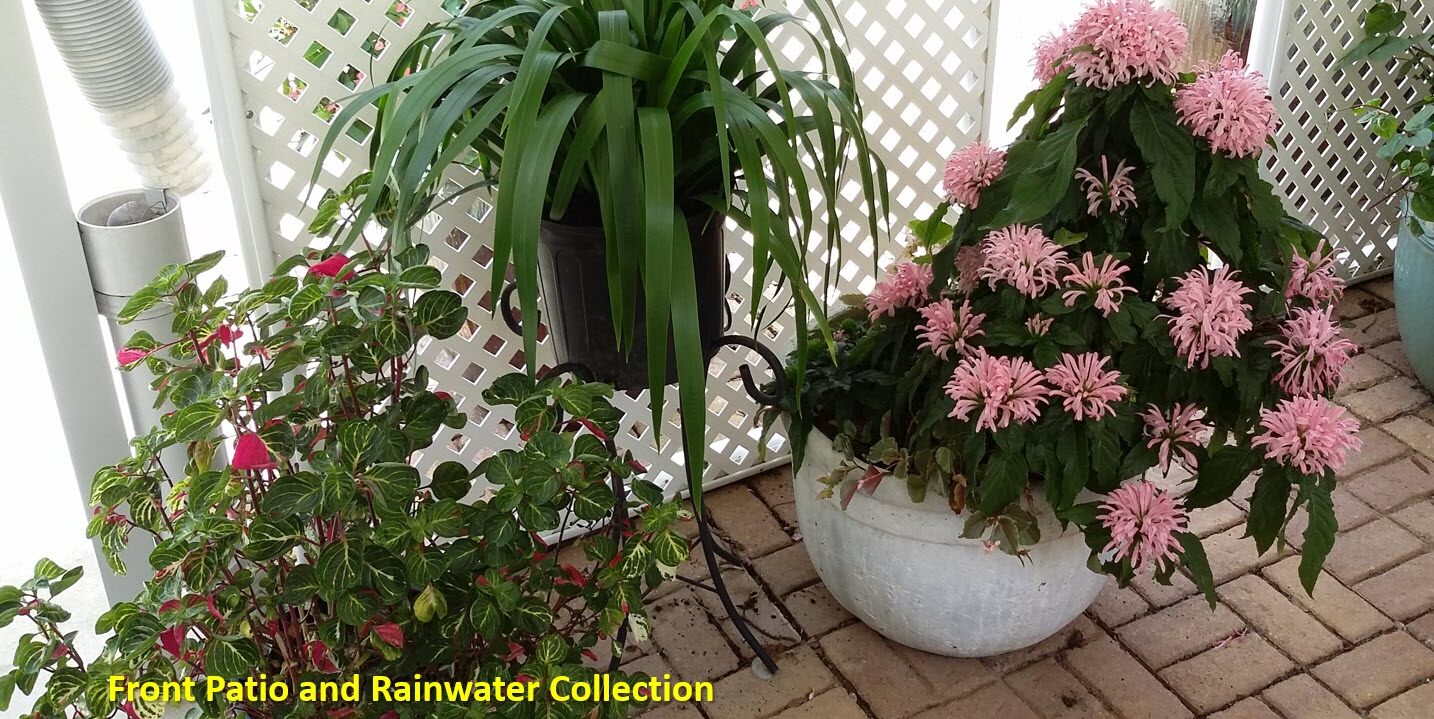The Bottom Line
Background
- The transition from reliance to self-sufficiency is accomplished in stages by reverting to alternate, less convenient methods of maintaining our daily lives. Installing a multi-function off grid outside kitchen represents a major step in that transition.
Pros
- The outside kitchen is very inexpensive to construct.
- Although the EcoFlow PRO bundle is expensive, prudent daily use can easily offset this cost entirely.
- The end result is a durable, inexpensive, and versatile space that supports our harvesting, cooking, and project needs.
Cons
- The EcoFlow PRO bundle is expensive to purchase (set-up is simple).
Cost
- About $250-$300 for the outside kitchen (if you do the work yourself). The EcoFlow PRO bundle cost $9.5K, which works out to about $50 per month over 16 years.
- Note: When the sun is shining, the electricity provided by this bundle is free. Thus, the purchase cost is sharply reduced by usage; in other words, the entire cost of the unit can be offset by consuming at least 2.5kWh per day (while the sun is shining).
Justification
- To quantify the benefits of our new off grid outside kitchen, we used it to cook our meals for thirty days. The result was surprising: our electric use in the main house was reduced by 50%! This test was conducted in winter (the air-conditioner and furnace did not run during the testing period).
- The choice to purchase the EcoFlow bundle was justified by its versatility in emergencies. Featuring wheels and a handle (like a suitcase), we can roll these batteries inside to power three rooms of the main house for up to 24 hours. An underground conduit (containing an MC4 charging cable) from the shed to the house allows us to charge the batteries (when inside the house) from the solar panels installed on the shed.
- If the house becomes unlivable due to storm damage, the shed now doubles as an alternate living space.
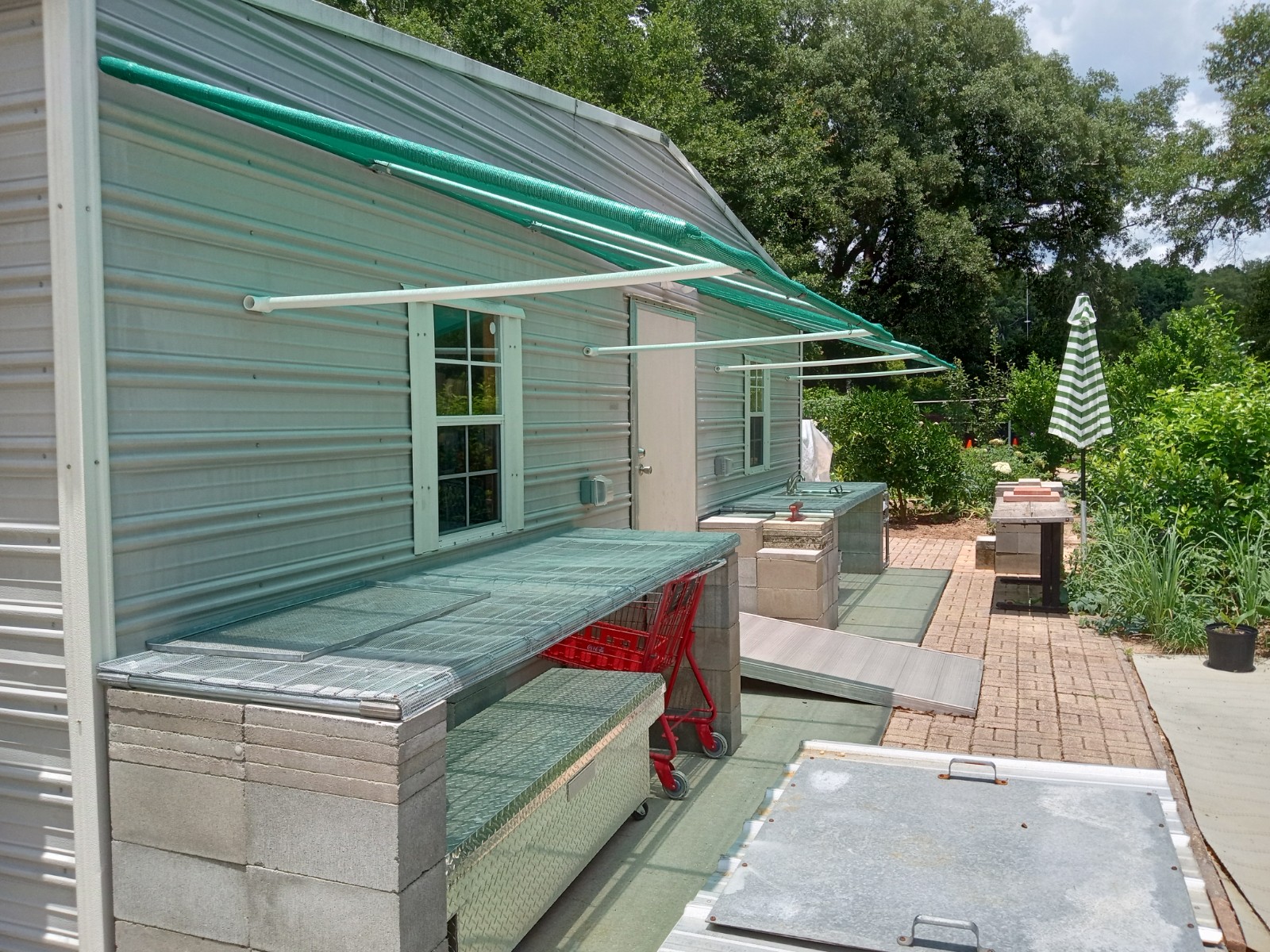
Our new weatherproof outside kitchen (above) won’t rust, rot, mold, mildew, or blow away. Best of all, it’s incredibly affordable (about $250, including the used stainless-steel sink).
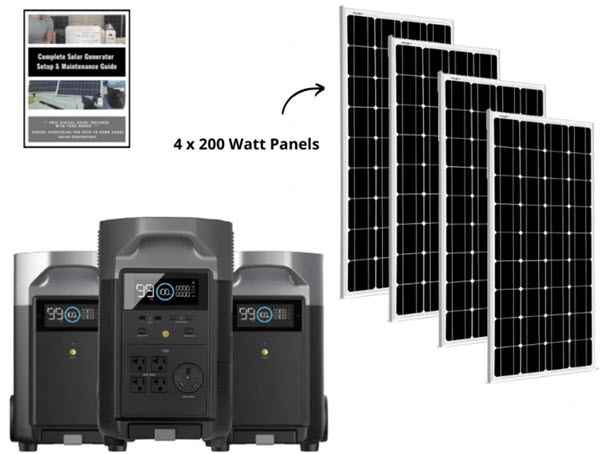
EcoFlow PRO Portable Solar Batteries
Wired for dual power, our shed now gives us the ability to run our tools, pumps, and new outside kitchen from rechargeable solar batteries. Offering a cycle-life of 16 years, our new EcoFlow PRO 10.2 kwh battery bundle (left) is a practical and reliable solution for those needing off-grid power. Learn more about portable EcoFlow solar power solutions at ShopSolarKits (highly recommended by EBG).
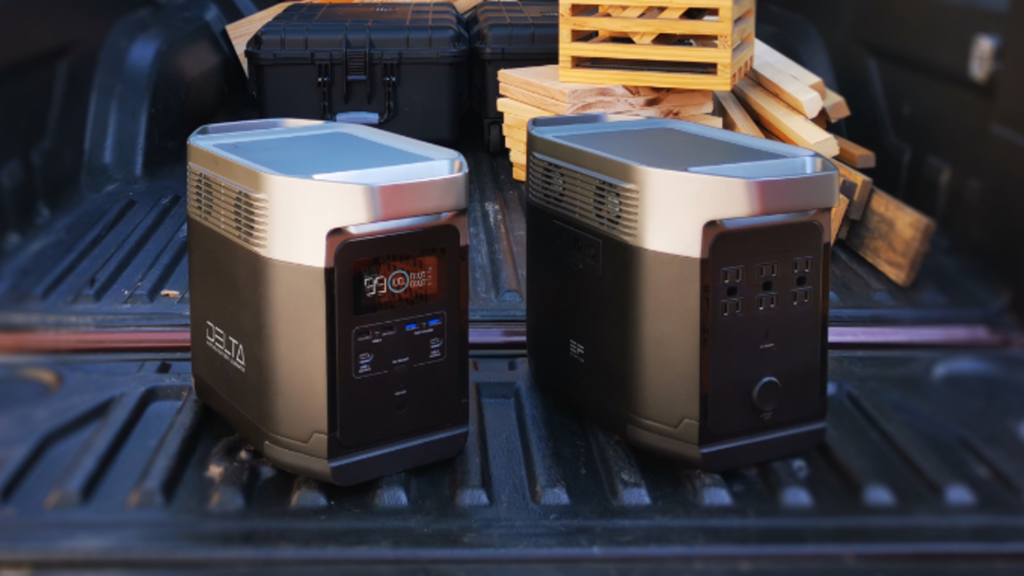
.
Our first solar batteries (EcoFlow Delta 1300) came with folding solar panels. They’re light enough to take camping.
.
.
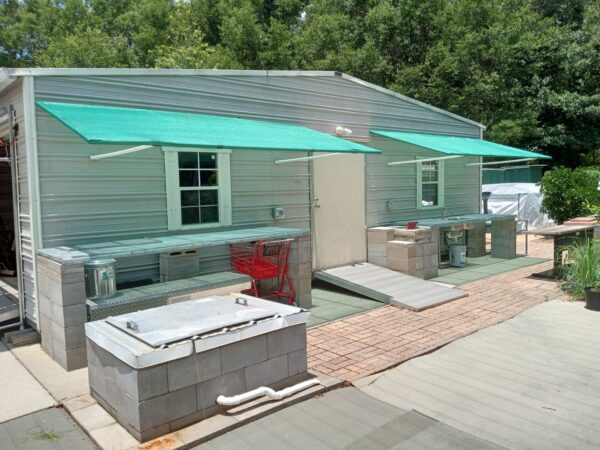
The left wing provides a work surface that’s a bit higher than that of the right wing (left). The extra height provides room for a task cart (recycled red shopping basket) and a roll-around truck bed toolbox (fitted with casters) that stores our outside kitchen appliances. The toolbox can be rolled out to provide seating when needed. The rear pumping station sits in the foreground. The removeable awnings are stitched from green shade cloth and can be lowered to withstand gusting wind.
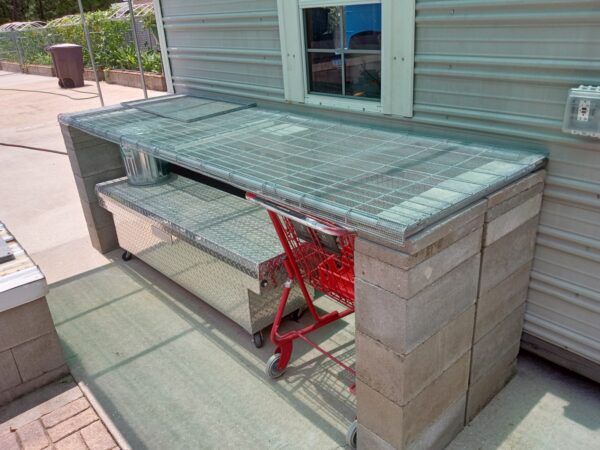
Each wing of the new outside kitchen is easily configurable; we simply change (or move) the concrete block stack to meet our ever-changing needs. As each work surface is ventilated, there is no need for anchoring to the supporting block stack; the wind simply blows through it. Note the GFCI outlet providing power for tools and appliances.
.
.
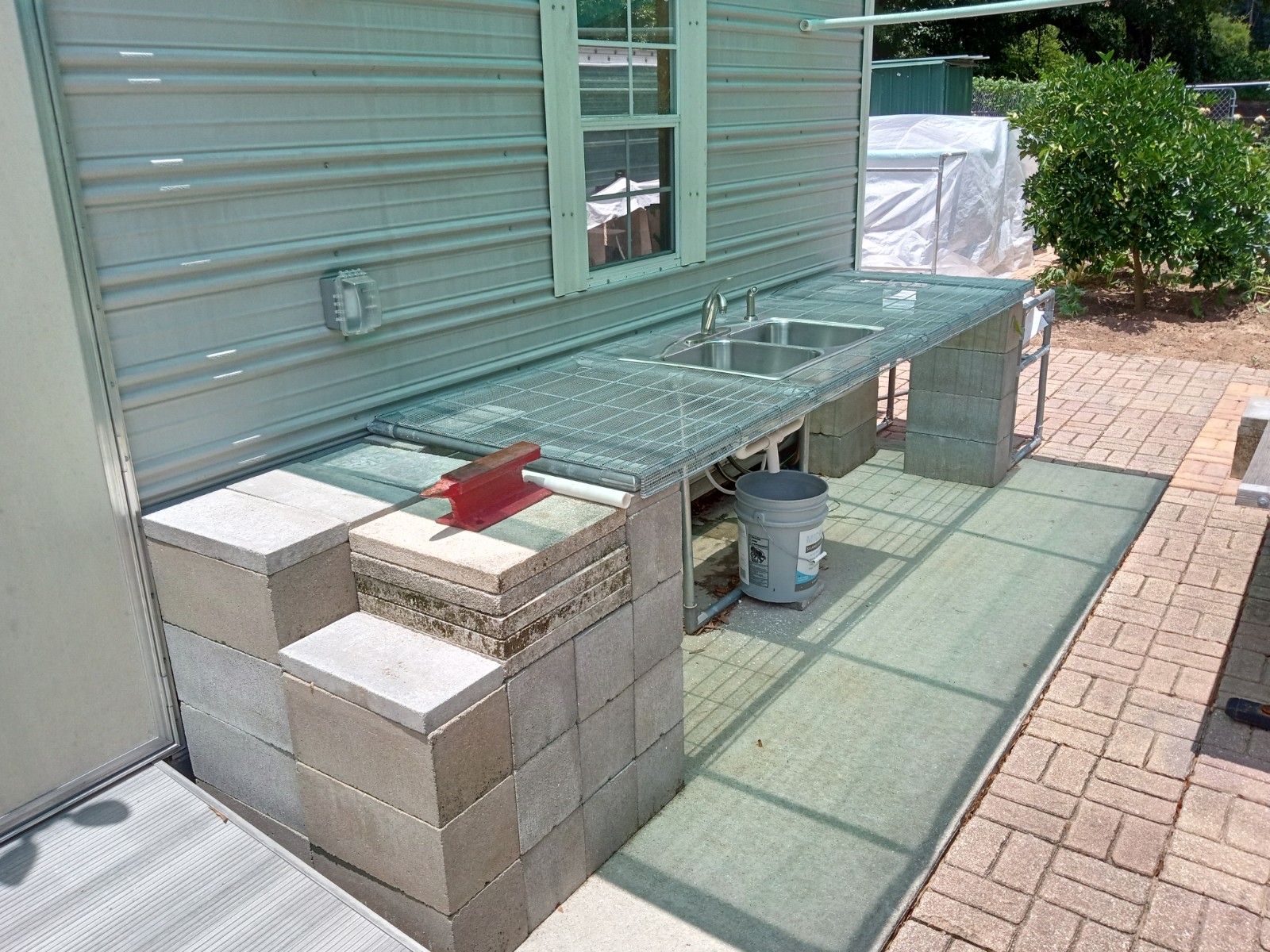
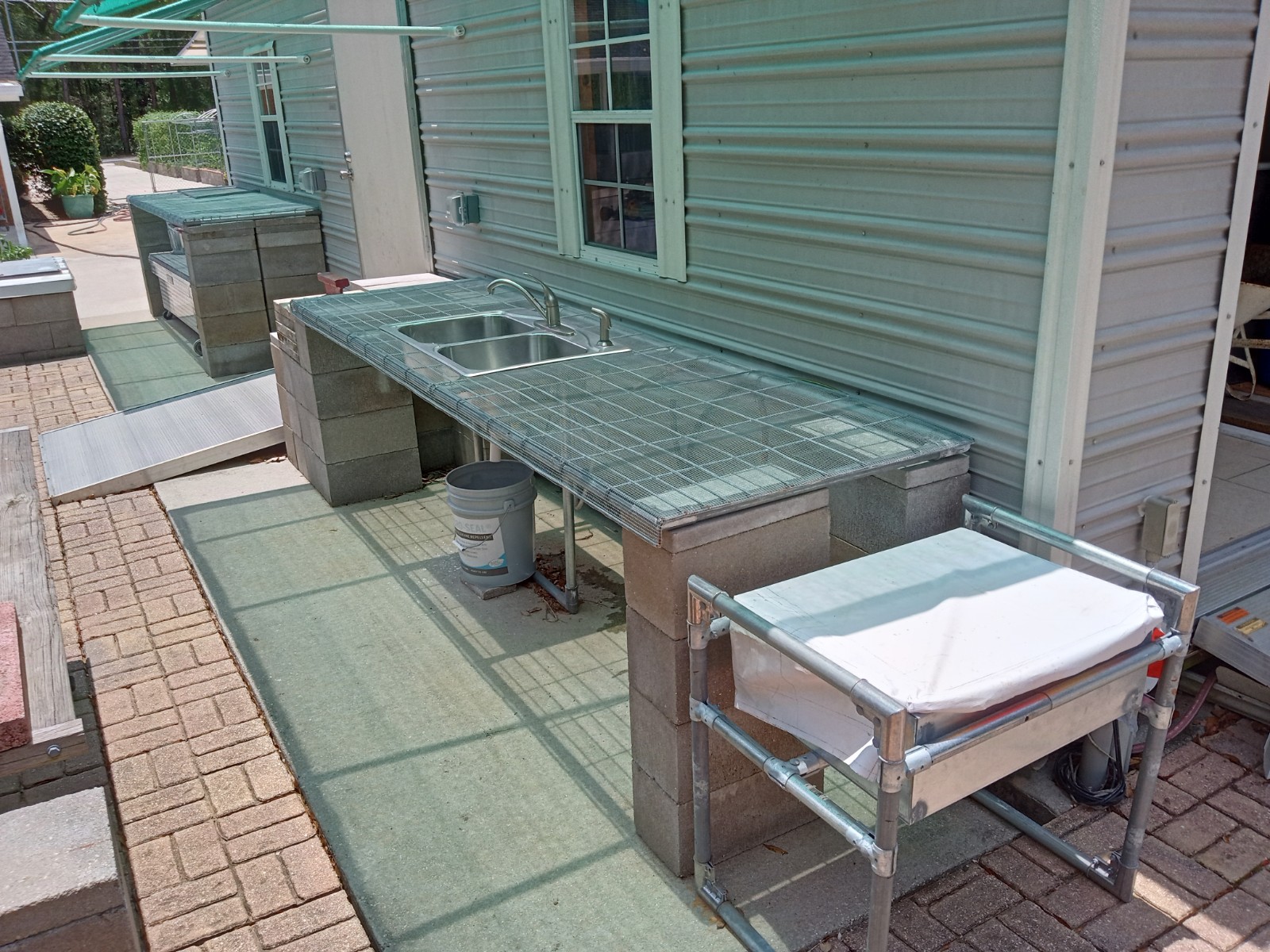
The right wing of our new outside kitchen features a sink and a GFCI outlet for power. The block stack (above left) stores a variety of blocks that are commonly needed for reconfiguring the area. The steel box containing the new Biogas stove (with custom rain cover stitched from BillboardVinyls) is visible at the far right of the image above (above right).
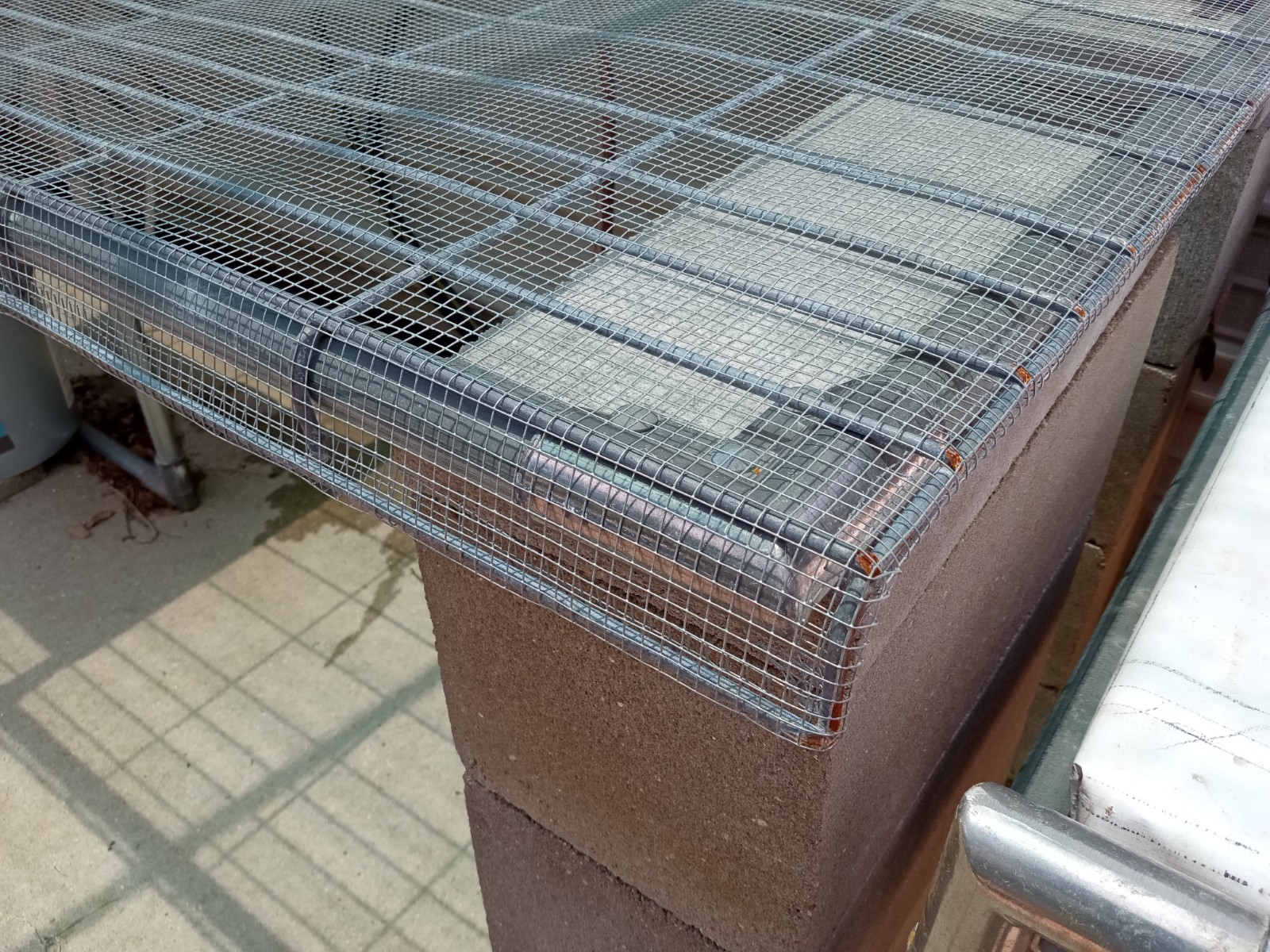
The worksurface of each wing is covered with 1/4″ metal fabric that is wired to a hog-panel that has been cut to size. The front edge of each hog panel is bent down to form a bullnose curve. A large plumber’s pipe wrench was used to produce the curve, working in stages across the front edge of the panel (the welds will break if you try to create the 90-degree bend in a single pass).


After the fabric is attached to the hog panel, the completed panel is wired to a frame constructed of 1″ galvanized fence pipe; note the reinforcements for the sink above. This design can easily be adjusted as you proceed through the steps of construction.
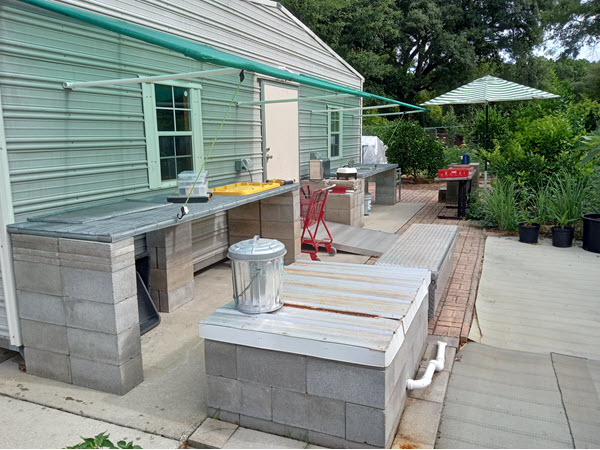
Shown here in daily operation, the end result is a durable, inexpensive, and versatile space that supports our harvesting, cooking, and project needs. Note the bungy-cord safety straps anchoring the awnings on a windy day.
